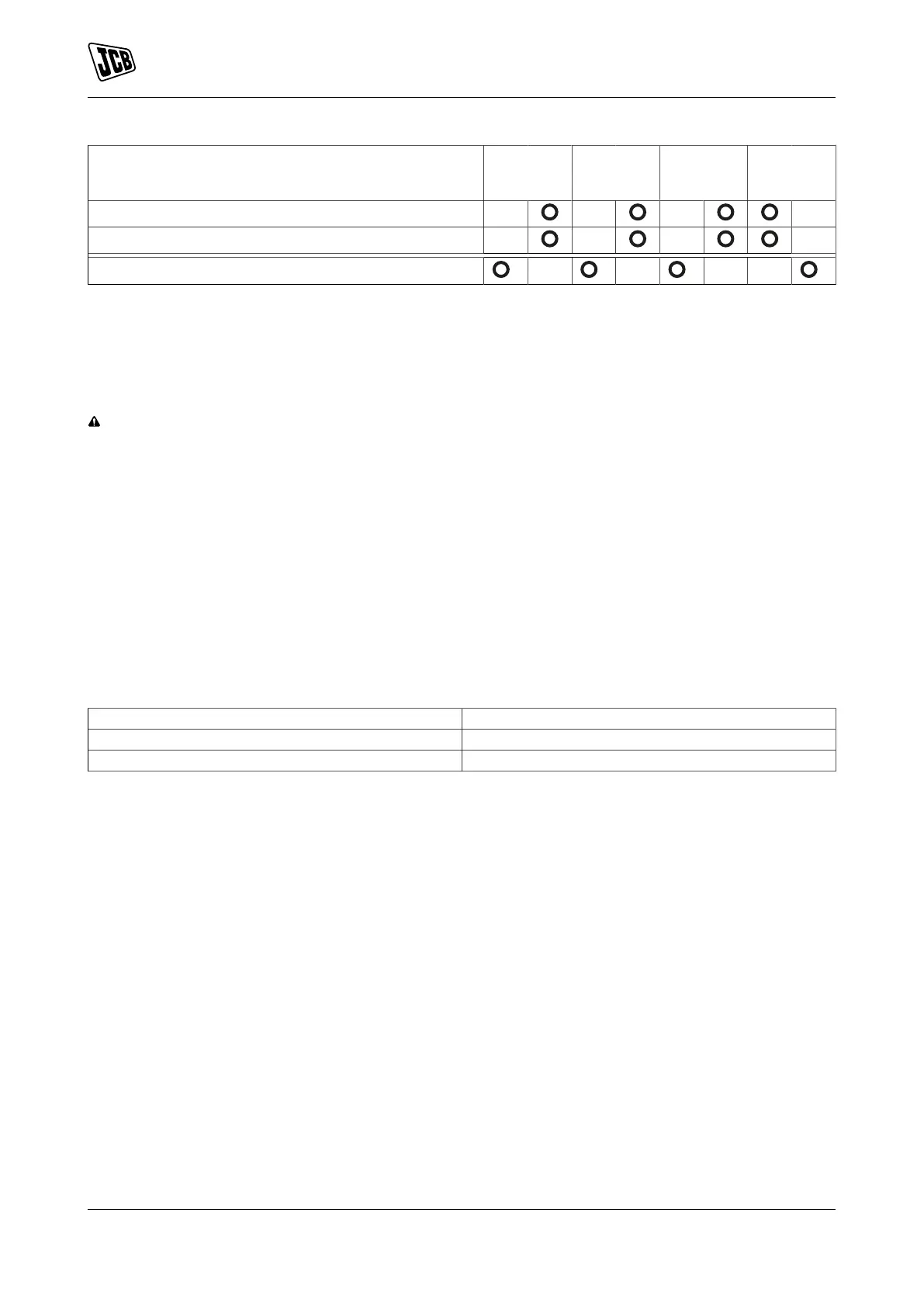Technical Data
Fluids, Lubricants and Capacities
146 9831/0650-3 146
Compati-
ble
Certifica-
tion emis-
sion
Warranty
coverage
Engine
waste
Civil Jet Fuels Jet A/A1
Civil Jet Fuels Jet B
Bio Fuels (EN14214)
(4) (4) (4) (4)
(1) Except for catalyst clogged and EGR.
(2) Without adding oil.
(3) Except for catalyst clogged and EGR. Shorter oil change intervals.
(4) Max. 10% in fuel.
Coolant
CAUTION Antifreeze can be harmful. Obey the manufacturer's instructions when handling full strength or
diluted antifreeze.
Check the strength of the coolant mixture at least once a year, preferably at the start of the cold period.
Replace the coolant mixture according to the intervals shown in the machine's Service Schedule.
You must dilute full strength antifreeze with clean water before use. Use clean water of no more than a moderate
hardness (pH value 8.5). If this cannot be obtained, use de-ionized water. For further information advice on
water hardness, contact your local water authority.
The correct concentration of antifreeze protects the engine against frost damage in winter and provides year
round protection against corrosion.
The protection provided by JCB High Performance Antifreeze and Inhibitor is shown below.
Table 81.
Concentration Level of protection
50% (Standard) Protects against damage down to -40°C (-40°F)
60% (Extreme Conditions Only) Protects against damage down to -56°C (-69°F)
Do not exceed a 60% concentration, as the freezing protection provided reduces beyond this point.
If you use any other brand of antifreeze:
• Make sure that the antifreeze complies with International Specification ASTM D6210.
• Always read and understand the manufacturer's instructions.
• Make sure that a corrosion inhibitor is included. Serious damage to the cooling system can occur if
corrosion inhibitors are not used.
• Make sure that the antifreeze is ethylene glycol based and does not use Organic Acid Technology (OAT).

